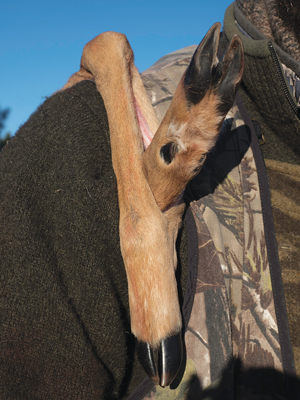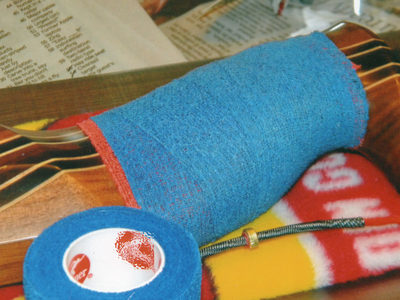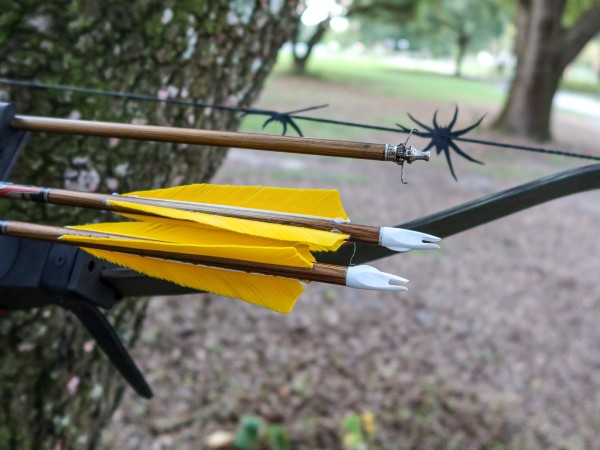This is an excerpt from Don’s article, And One For All, in the Oct/Nov 2019 issue.
We weren’t quite done yet. Back when we had four kids at home our household could consume amazing amounts of wild game. Now that it was just Lori and me, two deer would about do it. Knowing that gifts of venison would always be well received by family, I was down to making casual attempts to fill a whitetail doe tag once we had that mule deer hanging in the barn. Truth is, I was spending more time hunting mallards and pheasants with the dogs.
But young Mark still had a tag, and, unusually, he had not killed an elk that year. He came up early one morning, sat at the aptly named Don’s stand, and came to the house at breakfast time to tell us he’d shot a deer.
The spike whitetail had fallen to a perfect shot and died in plain sight, so there wasn’t much drama to the deer or the story. But it did provide us with an opportunity to illustrate a technique a number of people have asked me about over the years: How to pack out a deer when you don’t have a pack.
I learned this trick from my friend Kevin Low in New Zealand, and it’s remarkably simple. After field dressing the deer, make a cut through the skin on the rear side of each front leg from the wrist (hock) to the joint above the hoof. (Remember that in hooved animals, what looks like the “elbow” is actually the wrist, and the bone below it is a metatarsal, or foot bone. The terminology can be confusing—see photos.) Push each rear hoof through the slit you have created on that side. This will create two closed circles, each consisting of the front leg, the body, and the rear leg. You may have to push and tug a bit to get the rear hoof through the slit.
Each front leg now becomes a shoulder strap for the load. Usually, the slit behind the foreleg will be tight enough to hold the rear leg in place on its own. If not, put a hand on each rear hoof while packing. Cutting the head off will lighten the load. If you want to bring it out, lash it down to the body to keep it from swinging as you walk.
Since my days of packing whole elk quarters are behind me, there is an obvious limit to the weight of the load you can carry this way, but it works well on does and spike bucks. It is especially well suited to pronghorns, since even mature bucks are light enough to carry whole and dragging them will make a mess of their brittle hair. Since the bloody side of the field dressed animal will be against your back, clean it up as well as possible before setting out and don’t wear your most expensive jacket.
The accompanying photos ignore one important point, for which I apologize. Always drape a blaze orange shirt or vest over the animal while carrying it for the sake of safety.
Mark’s deer last year wasn’t much for antlers, but neither was mine or Lori’s. Thanks to him for providing me with an opportunity to illustrate a helpful trick many readers have asked me about over the years. As a writer I hate to admit it, but a picture really can be worth a thousand words.
Editor’s Note: A member of our Campfire Forum commented on this article, and added the following tip, which Don agrees with:
Don Thomas’s article in the previous edition showed how to carry a small deer by cutting slits in the fore legs and stuffing the hind legs through them. He suggested holding on to the hind feet if they start slipping out. I learned that you should also make a slit in each hind leg, then push a stick or large twig through this slit. This locks the hind leg in position so it can’t back out.
~Kees~









Leave A Comment